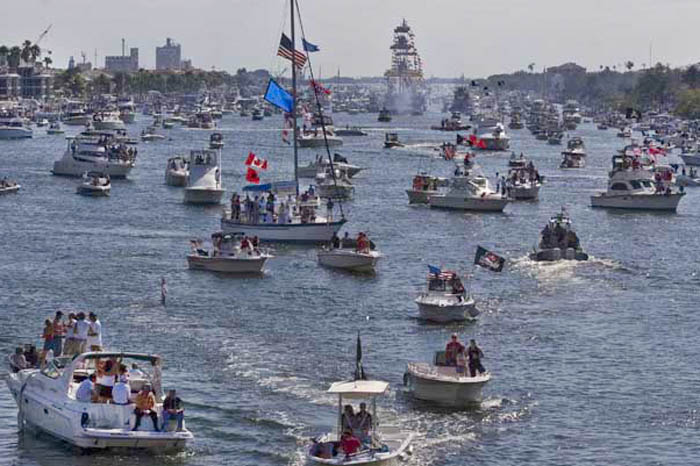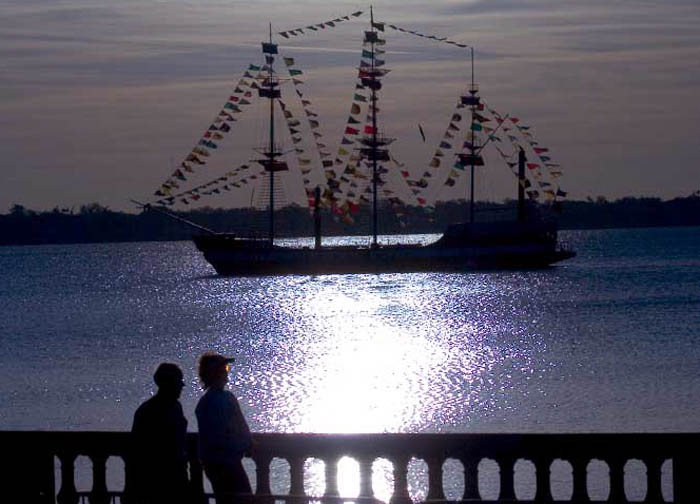
Culture Invasion: The History of Tampa’s Pirate Folklore
By: Dylan Lake
It’s the end of January and Bayshore Boulevard is deserted. No Jolly Roger flags, no Jack Sparrow lookalikes, and certainly no parade floats decked out with bead chucking pirate crews. Before 1904, this is what the area now known as The Bayshore looked like every January. Today, the people of Tampa anxiously await the end of the month so they can enjoy the celebration known as Gasparilla, a weekend festival born through pirate folklore.
So why did pirates become Tampa’s mascot? Why is Gasparilla the biggest and most well known block party in Tampa?
Our passion for pirates didn’t grow out of historic accuracy, but out of a marketing tactic.

At the turn of the 19th Century, there wasn’t much tourism in Tampa. In 1904, a group of business owners and tourist organizers formed Ye Mystic Krewe of Florida, a group that perpetuated the legend of a ruthless pirate named Jose Gaspar.
According to Tampa Bay History Center Curator Rodney Kite-Powell, who has done extensive research on pirate history in Tampa, Gaspar was never a real person. “As far as anyone knows, he did not exist,” he said. “However, the popularity of the legend and the parade in the 1920s and 30s kept the folklore alive.”
Kite-Powell thinks his story was exaggerated by Juan Gomez, the 100 something year old ex-pirate who lived in the Tampa area during the 1800s. He told stories about his alleged personal interactions with the great pirate Gaspar. “Gomez was a fisherman by trade but was also an amazing storyteller,” Kite-Powell said. “If his stories were true, about being captured by Gaspar, then he would have been 122 when he died.”

Gaspar’s likeness has sparked decades of great stories, not to mention an entire football team. In 1973, when Tampa was granted its expansion franchise, the team’s advisory board held a name-the-team contest. Out of 400 submitted names, the Buccaneers were selected as the favorite.
There have even been attempts to substantiate Gasparilla’s legend through rumors of buried treasure. “Many archeological sites have been destroyed on the hunch that buried treasure was located there,” Kite-Powell said.
Pirates have come and gone in Tampa’s time. No one is quite sure how many, although some are buried in Oaklawn Cemetery in downtown. Kite-Powell said there might have been a huge gathering of pirates in the city. It’s possible Tampa might even at one point been a town made exclusively of pirates.
“There is simply not enough evidence to prove it,” he said.
Truth or folklore, Jose Gaspar and his pirate legacy is here to stay.
